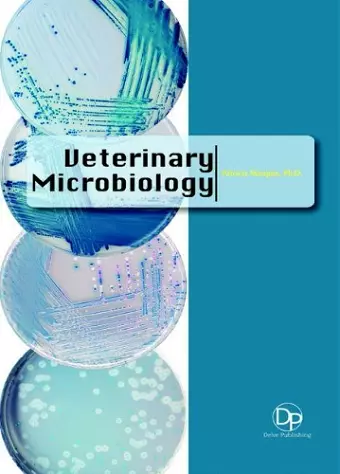Veterinary Microbiology
Format:Hardback
Publisher:Delve Publishing
Published:30th Nov '16
Should be back in stock very soon

Micro-organisms and their activities are vitally important to virtually all processes on Earth. Micro-organisms matter because they affect every aspect of our lives – they are in us, on us and around us. Microbiology is the study of all living organisms that are too small to be visible with the naked eye. This includes bacteria, archaea, viruses, fungi, prions, protozoa and algae, collectively known as `microbes’. These microbes play key roles in nutrient cycling, biodegradation/biodeterioration, climate change, food spoilage, the cause and control of disease, and biotechnology. Microbes influence all living things and contribute to all manner of chemical and physical processes. Because these activities are so diverse, the science of microbiology is multidisciplinary, calling on the skills and knowledge of individuals specializing in many different fields of life science, environmental science, and engineering. Microbiology arose, and continues to profit from, several previously independent scientific and medical disciplines, including bacteriology, virology, public health science, clinical microbiology, immunology, parasitology, vaccinology, and a host of other areas of inquiry. The field of Veterinary Microbiology comprises the study of four big areas, bacteria, virus, fungi and parasites. Veterinary Microbiology is concerned with microbial (bacterial, fungal, viral) diseases of domesticated vertebrate animals (livestock, companion animals, fur-bearing animals, game, poultry, fish) that supply food, other useful products or companionship. This book will only concentrate on bacteria. An Introduction about reservoirs, and bacterial pathogenesis is given in Section 1. Intracellular bacteria (Chlamydia and Mycoplasma) that can cause different diseases depending on species and host are discussed in Sections 2 and 3. The next Section (Section 4) is dedicated to Staphylococcus aureus that cause Respiratory disease. Listeria monocytogenes, a Foodborne bacteria, is discussed in Section 5. Sections 6 to 11 are about different agents of disease (Tularemia, Tuberculosis, Botulism, Abortion and Q fever, respectively). The next 3 Sections (Sections 12 to 14) concentrate on tick-borne bacteria (Borrelia, Rickttesia, Anaplasma and Ehrlichia). Section 15 discusses Corynebacterium an emerging bacteria. Most of this bacteria are zoonotic, they can infect both humans and animals, Section 16 focuses on the study of zoonoses.
ISBN: 9781680958713
Dimensions: unknown
Weight: unknown
575 pages